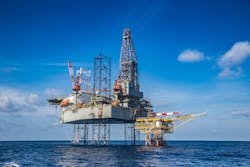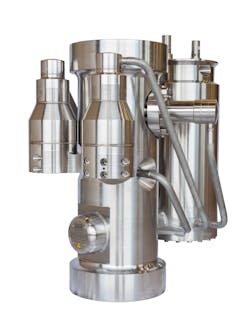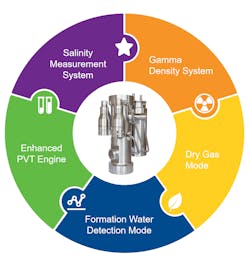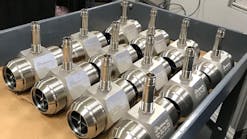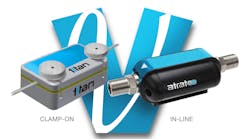Developing a subsea gas field is not a simple process. In fact, it is long, costly and complex. Even more so than a topside well, a subsea well provides a complex set of additional challenges. Great water depths are an obvious challenge — with rugged seabeds, high production pressure and temperatures all adding to the engineering challenges to design a suitable solution for subsea production systems.
Since the first subsea well was pioneered off the coast of California in 1961, oil and gas processors have designed and developed different ways to effectively deal with the unique issues that need to be considered for a subsea field.
Operators are looking for sophisticated subsea technologies that can provide real-time information on flow performance, protect well integrity, ensure more effective production operations and pre-empt production threats.
In a gas well, where water, other fluids and solids are produced, it is important to accurately measure and control these so that operators can mitigate risks. With the onset of unexpected water in a well, many operators react with alarm. Unanticipated water production can significantly reduce the value of the hydrocarbon asset, accelerate damage to equipment and increase the cost of handling and disposal.
In fact, unchecked water can lead to scaling in the production system and catastrophic water breakthrough with water coning and impairment of the well, causing a significant reduction of well production. The worst-case scenario in these situations is the subsea well being shut down or having a shorter life span.
With water and solids entering the flow line, the subsea production system may be subject to long-term risks, such as corrosion/erosion, and short-term risks, such as hydrates. Formation water properties vary from one reservoir to another, often within the reservoir as well. Detecting formation water breakthrough is crucial for well and reservoir management, and by installing dedicated subsea flowmeters, the operators can take action to mitigate these risks before they become severe.
A hydrate plug, for example, can form in as little as 20 minutes. Understanding flow conditions for forming hydrates, based on the data received from the subsea flowmeter, means immediate action can be taken to dissolve the plug before it causes disruptions to the flow.
Additionally, subsea tieback developments that enable long-distance tieback opportunities for remote and marginal fields have only exacerbated the danger. This can lead to delays before the onset of formation water is detected and measured topside. In such cases, it might be too late to react and save the well. The key drivers for the operator are to increase recoverable assets and optimize production, guarantee flow assurance, and ensure that operational decisions can be made in a timely manner with the most up-to-date information available.
The oil and gas industry is increasingly turning to natural gas resources as technological advances and digitalization unlock new reservoirs previously considered too difficult or costly to tackle. Natural gas is also a lower carbon emission alternative to other hydrocarbon fuels, playing a key role in lowering CO2 emissions and meeting important environmental impact goals. As the industry moves in this direction, subsea flowmeter solutions need to provide highly sensitive and accurate real-time flow measurements for wet gas streams.
Subsea flowmeters are used for reservoir management, enabling the operators to adjust the well to an optimum level and maximize hydrocarbon production while minimizing water production. This is important to enable a high recovery factor in the field.
Reservoir management today is all about creating a sustainable production strategy — one that negates production threats, provides insight into operations and maximizes production.
Types of measurements in multiphase flow
To measure multiphase flow, a flowmeter needs to utilize different measurement techniques to be able to measure the different fluids within a flow line. For gas fields, water is often a concern due to the aforementioned risks, and therefore, there are dedicated subsea flowmeters for these applications to ensure the best performance is available to the operators.
Wet gas meters provide real-time, accurate subsea measurements of hydrocarbon flow rates and water production — crucial decision-making information for the operator.
The accurate measurement of water salinity has also become increasingly important. Salinity measurement tells the reservoir engineer whether formation water is entering the flow and helps the process engineer adjust injection rates of scale and corrosion inhibitors accordingly — without flooding the well as was previously sometimes the case with monoethylene glycol (MEG). Small pockets of formation water seeping into the wellbore can therefore be detected instantaneously with the salinity system, providing quantitative and qualitative real-time measurements in a wide variety of field conditions.
Figure 2 gives an overview of the types of available measurement options incorporated in a subsea wet gas meter.
The subsea wet gas meter is engineered specifically to meet the challenges described here. It consists of an all-in-one device, with additional add-on modules for field-specific challenges.
Long-term benefits
The immediate dangers are well known to a subsea gas producer; however, the long-term risks must also be considered. Corrosion is especially dangerous when the majority of pipes are in deep waters. Having a subsea wet gas meter that reports on the corrosive nature of the fluids flowing through the pipes can allow for greater vigilance on the part of the operator, thereby reducing environmental risks. The operator may choose low alloy steel pipes (saving CAPEX), and, with full control over the fluids produced, they can take the required steps to avoid the impact to the pipe by injecting just the needed amount of chemicals. By not over-injecting chemicals, OPEX is also reduced.
After the installation
As important as it is to engineer the correct solutions for a subsea well, so too is the aftercare of an installation. Knowing a gas production company has access to skilled support from the manufacturer becomes a highly prized benefit — should support be needed. Having skilled technicians available at strategic locations around the world near big oil and gas production fields builds peace of mind and ensures that unexpected shutdowns are resolved quickly.
Subsea gas production sites are found worldwide, supplying both commercial and residential customers with the fuel they need to run their daily businesses and lives. Placing support and repair facilities at a reasonable distance to those larger gas production areas benefits both the producers and the equipment manufacturer.
Today, the world still relies on hydrocarbons. Ensuring those reach customers without interruption requires both careful planning and the right equipment. Significant innovations in technology and software for deep-sea production ensure that customers are supplied with fuel and producers can maximize well efficiency and production with lower risks. The subsea wet gas meter has improved production across the globe.
Svein Eirik Monge is a commercial manager for Emerson’s Roxar flow measurement products and has been with the company for over 15 years. Monge’s previous roles with Emerson’s Roxar products include production technician, service engineer, service project manager, product manager for the Roxar Subsea Wetgas Meter and combined strategic account manager and commercial manager for subsea flow metering.
Svein Eirik Monge | Commercial manager for Emerson’s Roxar flow measurement products
Svein Eirik Monge is a commercial manager for Emerson’s Roxar flow measurement products and has been with the company for over 15 years. Monge’s previous roles with Emerson’s Roxar products include production technician, service engineer, service project manager, product manager for the Roxar Subsea Wetgas Meter and combined strategic account manager and commercial manager for subsea flow metering.
